京焼 · 清水焼 京都陶磁器協同組合連合会
KYO-YAKI · KIYOMIZU-YAKIPOTTERY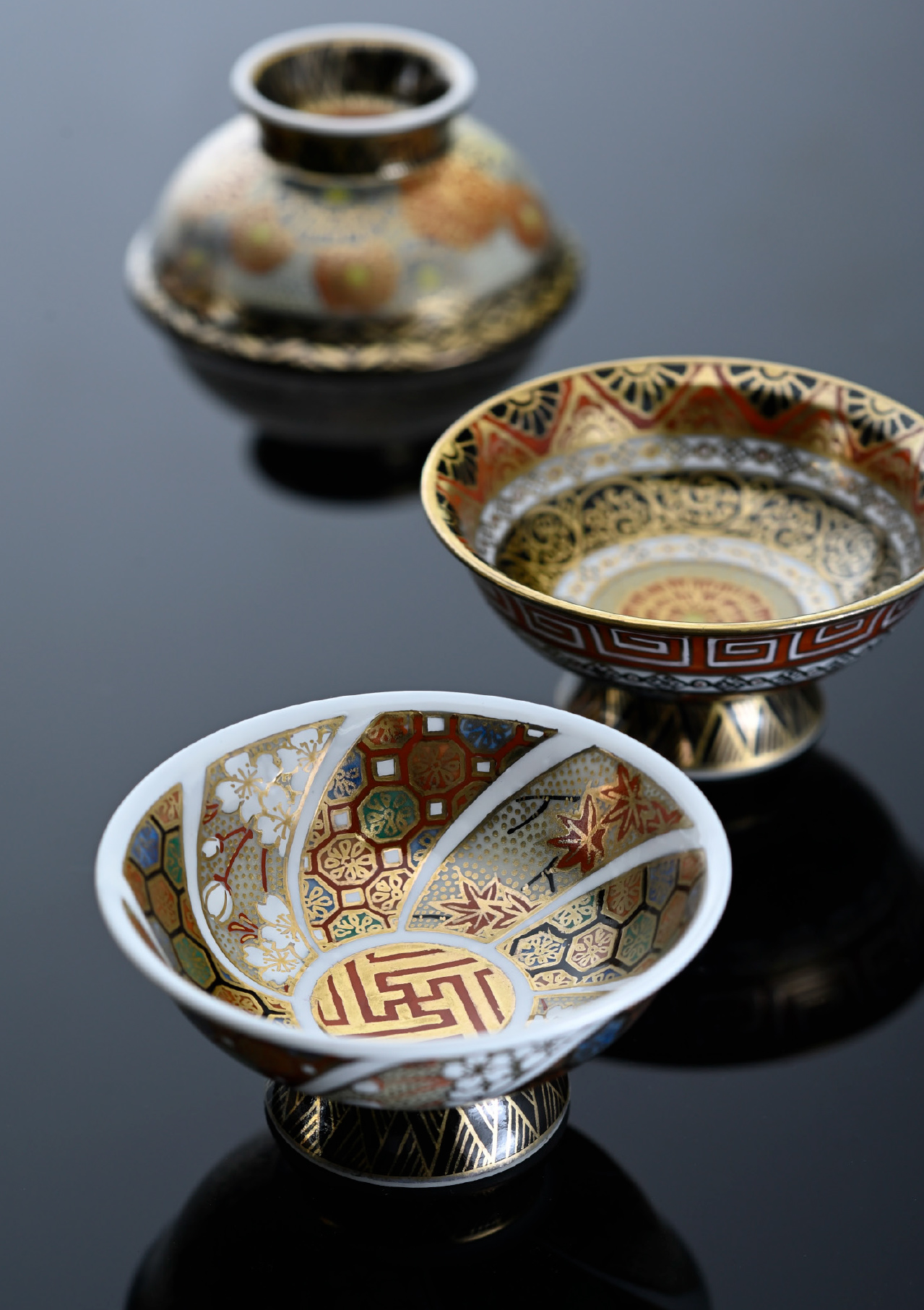 1
1
- 京薩摩の盃。
京焼は、17世紀頃から京都各地に窯が築かれ、茶の湯の興隆を背景に発展しました。清水焼はそのうちの一つで、清水寺の参道である五条坂で焼かれたものを指しますが、現在では、京焼・清水焼はほぼ同義語となっています。京焼の大きな特徴は、ひと言であらわせる特徴がないこと。つまり、皇族、貴族、寺社仏閣、そして茶道や花道など政治・文化の本拠地である京都に日本中から選りすぐりの材料と高い技術をもつ職人が参集したため、あらゆる技法、形、絵付けの粋が一気に花開いたのです。現在も、金彩をほどこした豪華で繊細な絵付けの磁器から焼締の陶器まで、窯ごとにさまざまなスタイルの焼物が生産され、その技術とセンスを競っています。茶器や食器、花器だけでなく、タイルや洗面台のボウルなど、オリジナルの建材を手がける窯もあります。
Kyoto Pottery (Kyo-yaki) was developed around the 17th century, with kilns built around Kyoto alongside the rise of tea ceremony (chanoyu). An example is Kiyomizu-yaki, which refers to the pottery made in the Gojōzaka district near the Kiyomizu Temple, but today the terms Kyo-yaki and Kiyomizu-yaki have become almost synonymous. The main feature of Kyoto pottery is precisely that it cannot be summed up by one characteristic. In other words, there was a multitude of styles, with artisans from all over Japan using the finest materials and more advanced techniques. Kyoto was the center of politics and culture, and the presence of the imperial family, aristocracy, temples and shrines, tea ceremony and flower arrangement art meant that all the techniques, shapes, and painting styles blossomed all at once. From beautiful and delicate porcelain decorated with gold to high-fired unglazed ceramics, various styles of pottery are produced in each kiln. In addition to tea ware, tableware, and vases, there are kilns that handle original building materials such as tiles and washbasin bowls.
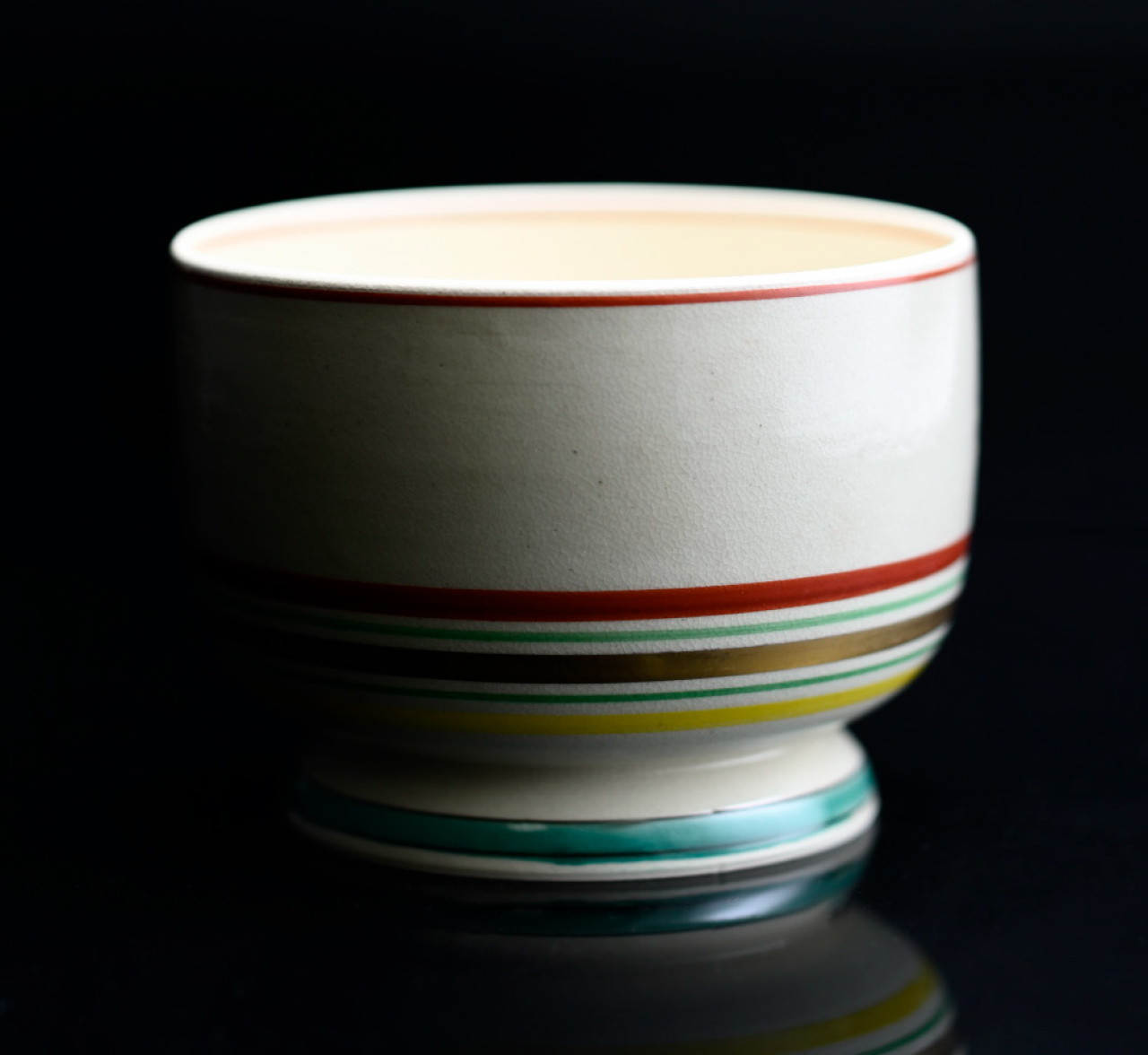 2
2
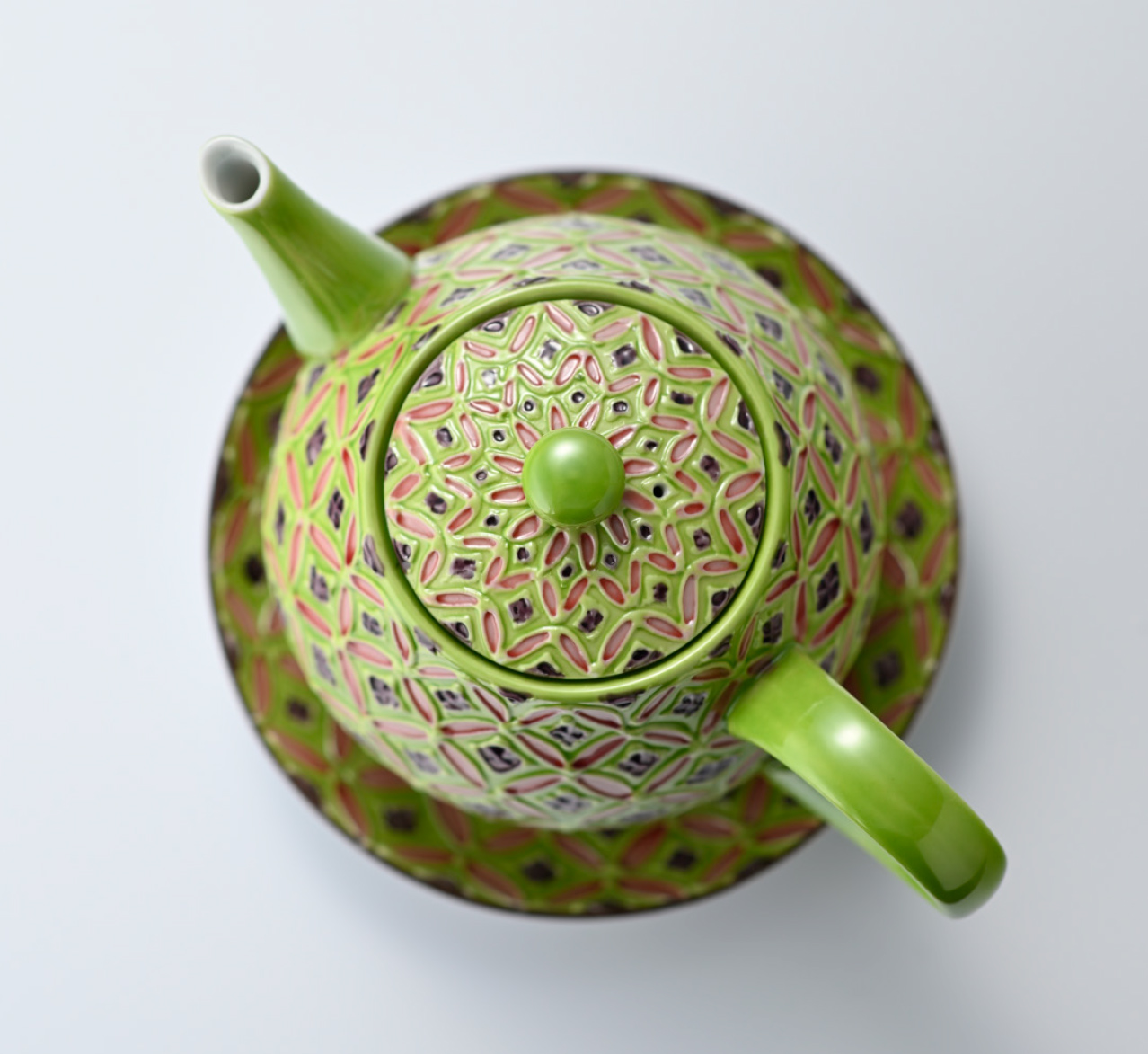 3
3
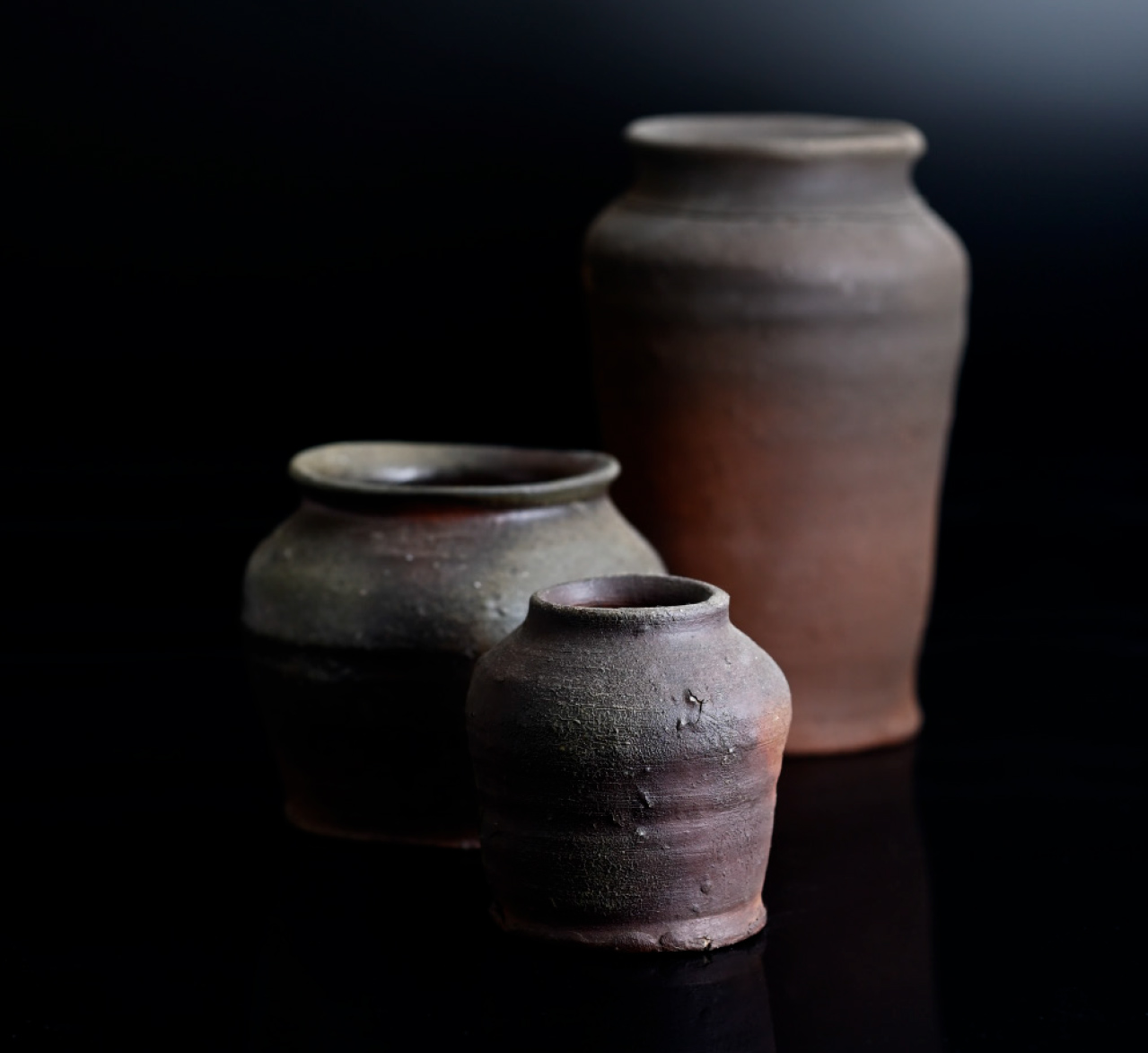 4
4
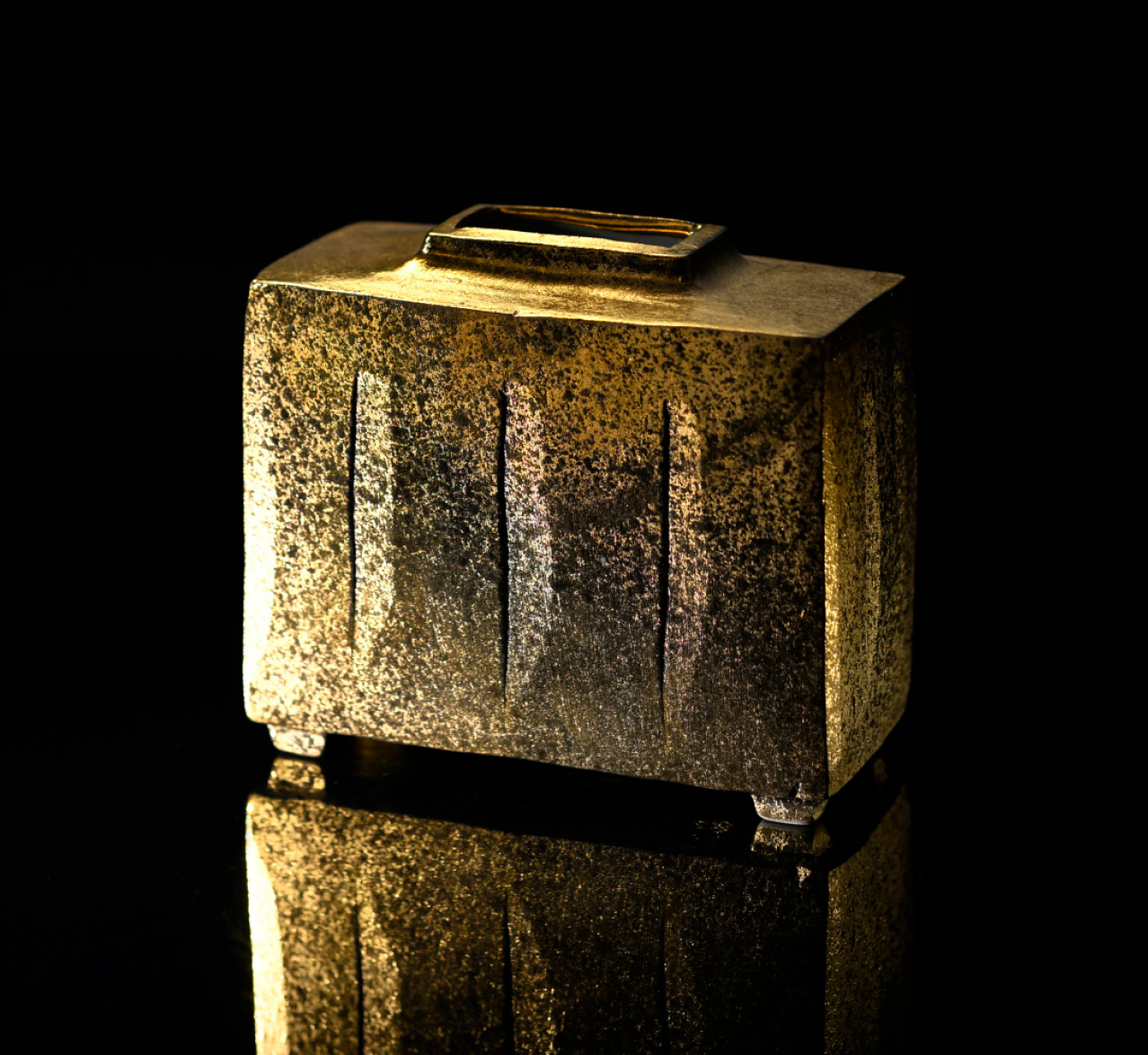 5
5
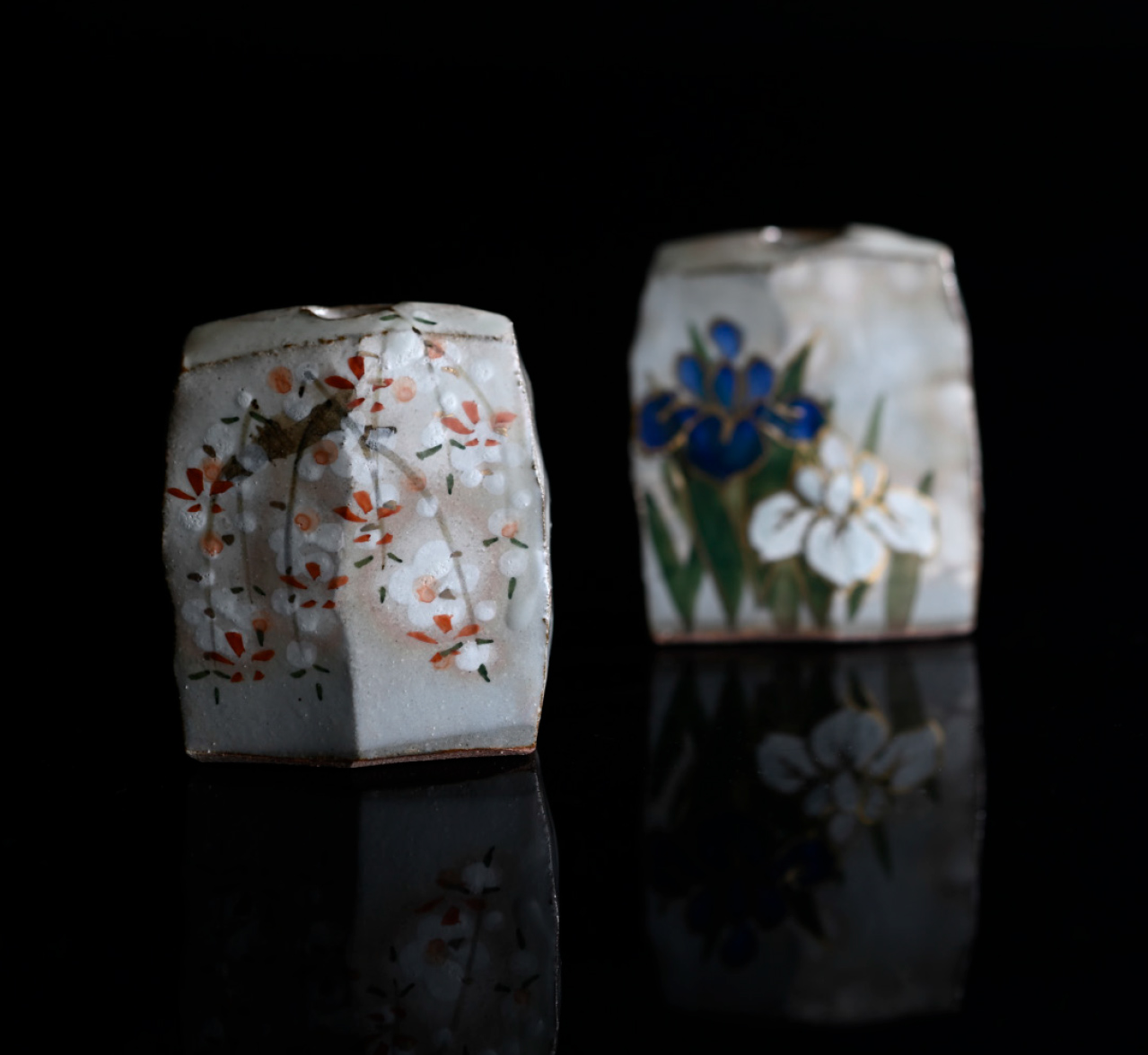 6
6
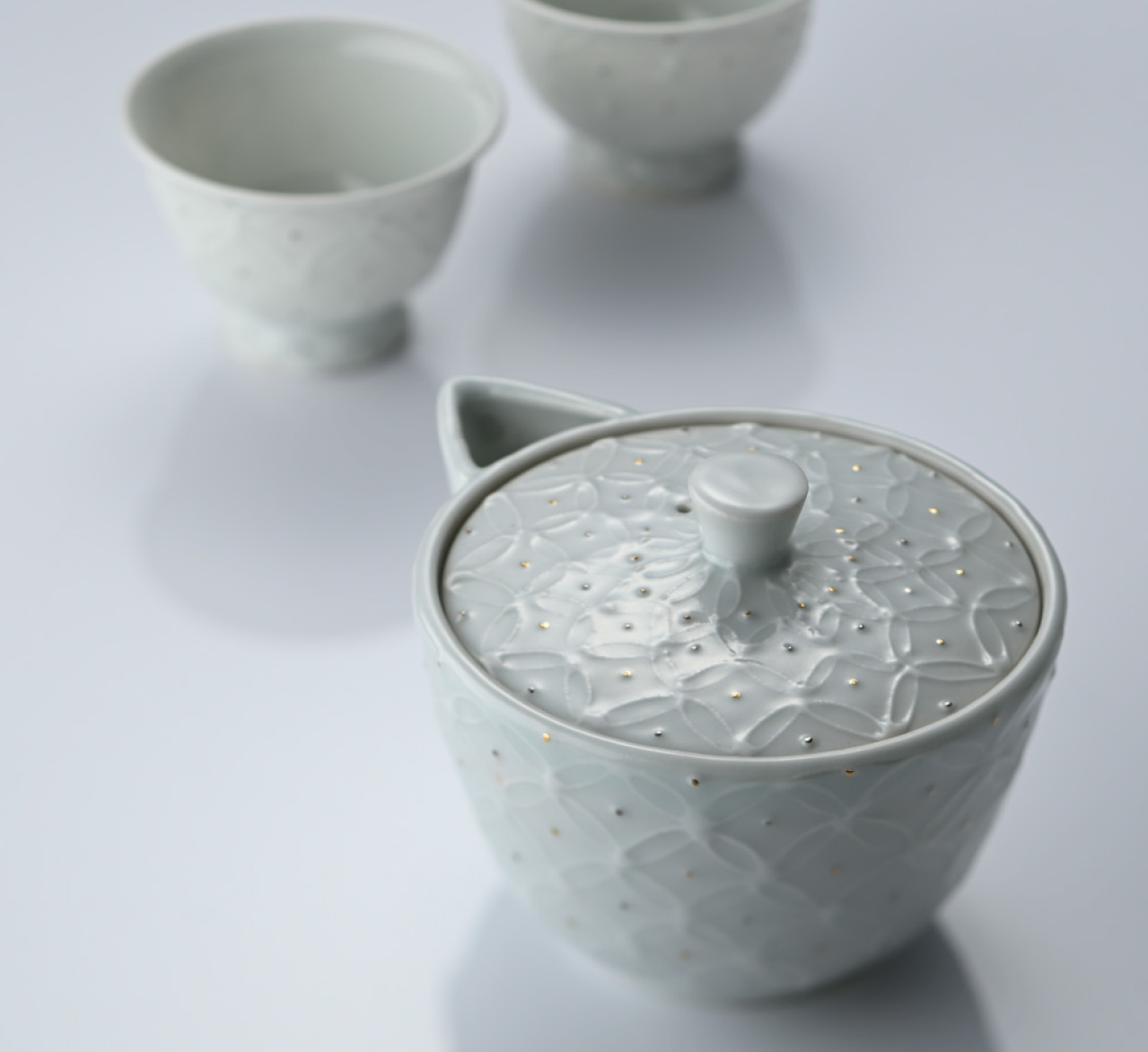 7
7
- :17世紀に活躍した野々村仁清が好んだ細やかな貫入の入った仁清生地の飯器。
- : 発色が鮮やかな交趾釉のポット。
- : 焼締の花入。
- : 花入。
- : 一輪挿し。
- : 白磁七宝紋宝瓶と煎茶碗。
(1 山城直人 / 2 京泉窯 / 3,5,7 洸春陶苑 / 4 村田 森 / 6 俊山窯)
1: Kyo Satsuma cup. 2: Teacup rice bowl made of Nissei dough with a fine intrusion that was favored by Nissei Nonomura. 3: Cochin-glazed pot. 4: High-fired unglazed vase. 5: Vase. 6: Vase. 7: White porcelain Shippo handless teapot and sencha bowl. (1 Naoto Yamashiro / 2 Kyōsen Kiln / 3,5,7 Kōshun Pottery / 4 Shin Murata / 6 Shunzan Kiln)

